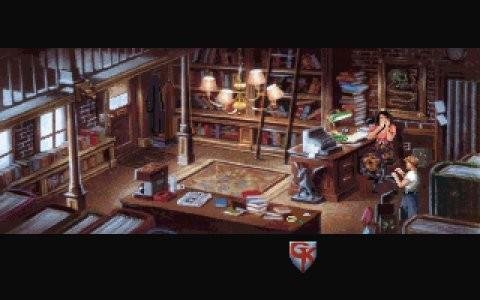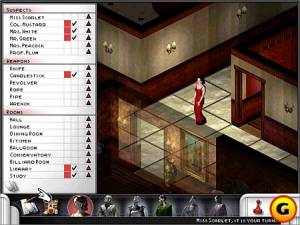

It went on sale late in 1998 and, as of 2007 was still for sale, available at many retail stores and via the Internet. Ĭlue enjoyed an unusually long shelf life for a video game. The same 3D characterisations in this game would later appear in the Cluedo-inspired title Fatal Illusion. Virginia McArthur, Producer, EAI Interactive.Tom Zahorik, Producer, Hasbro Interactive.Bryan Brandenburg, Executive Producer, EAI Interactive.Glosecki, Executive Producer, Hasbro Interactive The game does not include credits, however dozens of people were involved in Clue's development.

He also refers to an unconfirmed rumour that "Miss Scarlet was modeled after our producer, Virginia". I think the only guidelines we were given was that she be drop-dead gorgeous, which of course she is". However, he adds "I don’t think any of the rest of the team envisioned her that way. When asked if any of the characters were originally designed differently from how they turned out, Nash said "In an early design document, which was never used, it was mentioned that Miss Scarlet should be from “indeterminate Asian origin". Of course they had the final say on everything, but I don’t think we bumped heads on too many things". They gave some broad guidelines and let us go. He summed up by saying, "Overall, as far as I know, Hasbro didn’t nit-pick us about every little element. He recalled shared a cubicle with the interface designer who wanted to make most of the interface elements Art Deco, so Hasbro green lit the idea on the basis of consistent user interface. One early art lead (she was later replaced) wanted to make the entire mansion Art Nouveau or Art Deco, but Hasbro said she could do one room that way, but not the whole mansion". All I heard was that it should look 1920-30-ish. The art was handled in Ames, Iowa and I was in Salt Lake City, Utah. For the look of the mansion and such, I think we were given a lot of freedom, however I wasn’t involved much in this process. We did what Hasbro wanted despite the major flaw. The Game Designer wanted it one way, but Hasbro wanted it another. He further explains "The layout of the UI was the only real sore point for the whole game. However the final cut-scenes were designed to be dark enough for the room to be unidentifiable, thereby overcoming this problem. This was most probably due to cost/time factors - it would have required 6 * 6 * 9 = 324 suggestion animations. This is because of a call by one designer at Hasbro". For example, Miss Scarlet in the kitchen with knife should have a visual representation somewhere on the screen, but it doesn’t. One big flaw in the game is the lack of a visual for suggestions made. He explained, in regard the design of the game: "We were given some freedom, but in the end Hasbro had final say on graphical treatments and such. Chris Nash, Lead Programmer on the game, who was interviewed by the official Cluedo fansite in May 2003, said that while it was a fun project to work on, "it was hard at times too, e.g. Hasbro Interactive, the game's publisher, funded the project. This version of Clue aimed to "improve.on all of those areas with most of the emphasis put into the artificial intelligence of computer players in the game." ĭevelopment of Clue took approximately one year.

The AI, board presentations, and game mechanics of the existing version were all bad".
#Clue computer game 1998 free#
It was developed as "The existing version is not free and is also not that good. Development of the mansion, constructed piece by piece, began in Ames, but moved to Salt Lake City about halfway through the project. Most of the programming and game design took place in Salt Lake, while most of the art and animations were developed in the Ames office. The development team was divided between EAI's interactive division in Salt Lake City, Utah and its main office in Ames, Iowa. Clue was developed by a branch of Engineering Animation, Inc.


 0 kommentar(er)
0 kommentar(er)
